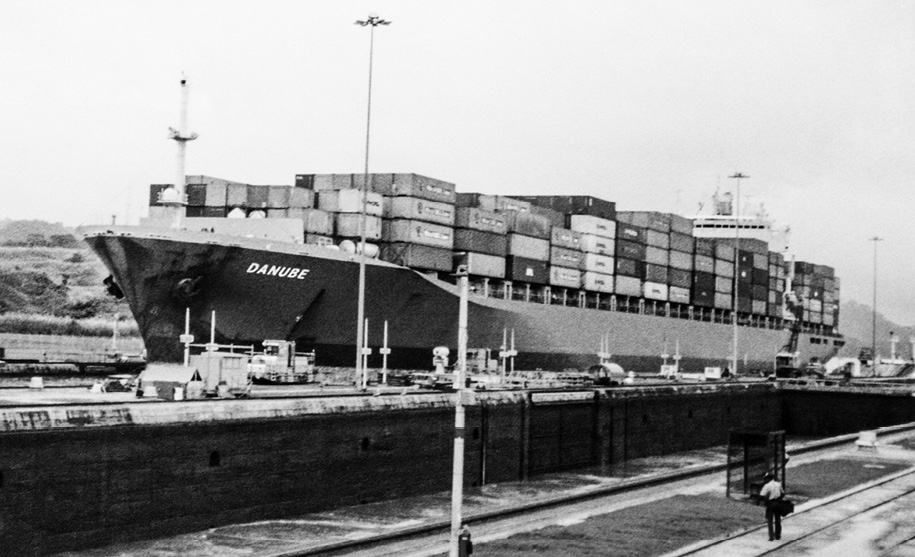Panama Connectivity

Cargo ship in Miraflores Locks, Panama Canal, Panama.
Over two decades ago, before I had been to most of the places I have written about in this book, Panama was the first Central American country I visited. Then an inexperienced traveler, wandering around Panama City, I felt out of my depth, even a little lost. These were the thoughts going through my head as I found myself in a supermarket, getting out my purse to pay for shopping. Wearing my kara (an iron bracelet worn by Sikhs), I suddenly noticed the person ahead of me in the queue also had one around his wrist. A few years later, I would meet my Sikh spiritual advisor, Bhai Sahib Mohinder Singh, in the same way, but that was at the United Nations in New York and this was Panama, the most unlikely of places to meet a fellow Sikh. That one small thing helped jolt me out of my loneliness. Here was a familiar thing, a shared culture and symbol in an unfamiliar place. A chink of light. A connection out of nowhere. It was later that I realized this small episode was symbolic of Panama as a country that is defined by the connections it makes: between people, between countries, and as an entrepôt for global flows of trade.
By its geography alone Panama represents connectivity: a strip of land, just sixty kilometers wide in places, that links Costa Rica and Colombia, tying together Central and South America. One of the smallest countries in the region is also the most strategically important, a trade route that unlocks the economic potential of continents. Panama’s connectivity explains why mighty China has courted this tiny isthmus as part of its plans to scale up trading links with Latin America.
Of course the defining fact and symbol of Panama’s connectivity is the Canal. As a nexus that, following its recent expansion, connects over 140 trade routes to 80 countries and approximately 1,700 ports, the Panama Canal is one of the great forces for global connection and trade. But the Canal has done more than help create a global infrastructure for trade. It has also been a substantial force for connecting people, from those who came to build it in the first place to the many who continue to earn a living through it today.
While the U.S. has been most associated with construction of the canal, the 75,000-strong workforce that built it over a ten-year period came from across the world: from the Caribbean, China, India, France, Spain, Italy, Greece, and Costa Rica. Today Panama remains a place where the world comes together, especially in the capital, where over half the population lives. Panama City has been described as the most cosmopolitan metropolis in Central America, home to workers and visitors from around the world. Immigration has underpinned an economy that grew at twice the speed of the regional average between 2001 and 2013, and which is ranked the second most competitive in Latin America and the Caribbean.
The Panamanian government has recognized the importance of this global connectivity to the country’s success, with a crisol de razas (melting pot) program that has provided legal status to tens of thousands of foreign workers through large-scale amnesties. These have continued despite some opposition, because of the significant economic benefit that immigrant labor provides.
Connectivity matters for nations and economies, and the same is true for people. We all have a choice about whether to be more or less connected: to meet new people in our personal or professional worlds, to improve our understanding and empathy, and to bring together individuals and organizations who might have something in common. People and companies thrive on connectivity: the intangible power of a network of people, ideas, and experiences. And we become better people by being more connected: more knowledgeable, more informed, and above all more compassionate to the people and world around us. It is hard to succeed in life as an island; only by creating connections, for ourselves and between other people, can we truly thrive.